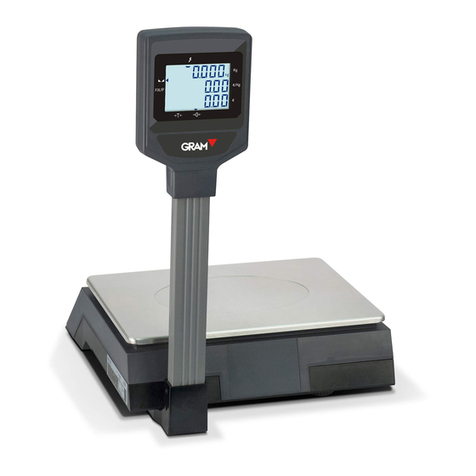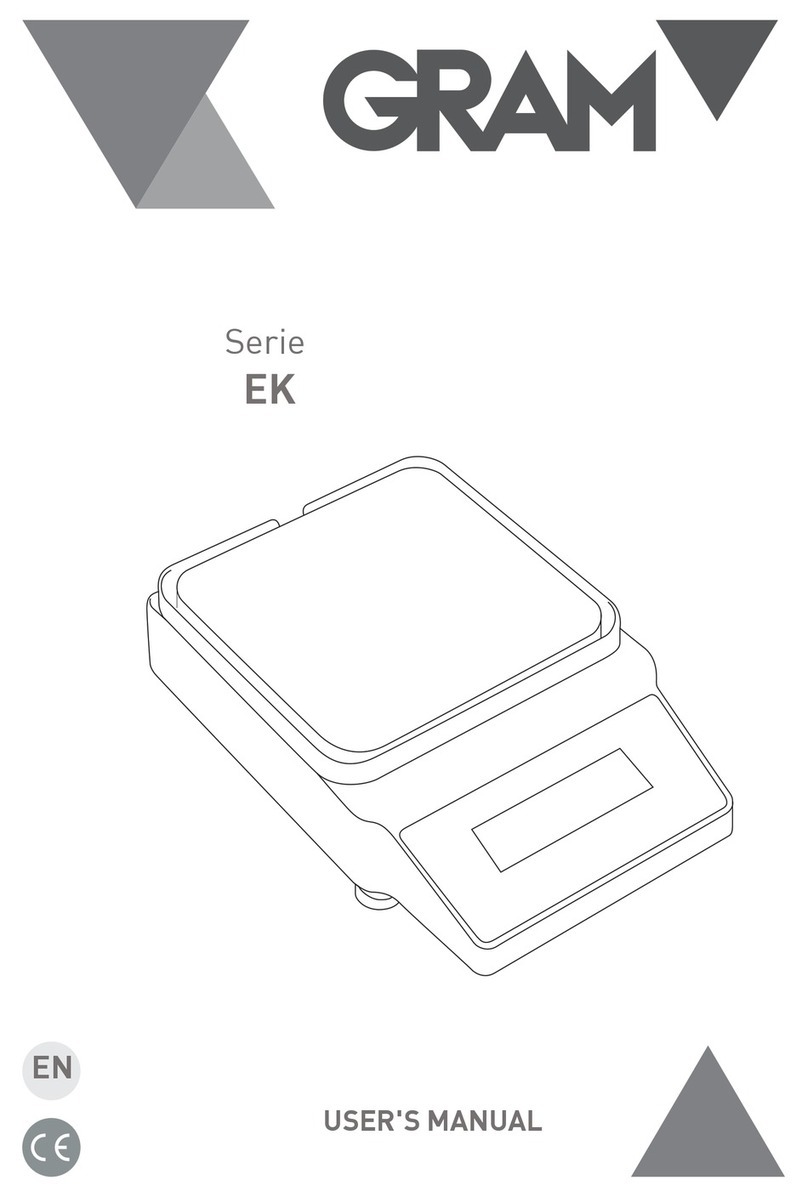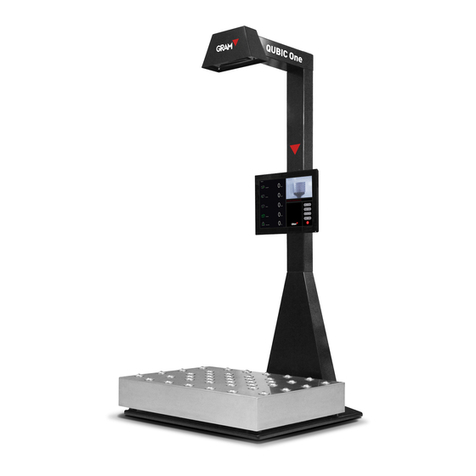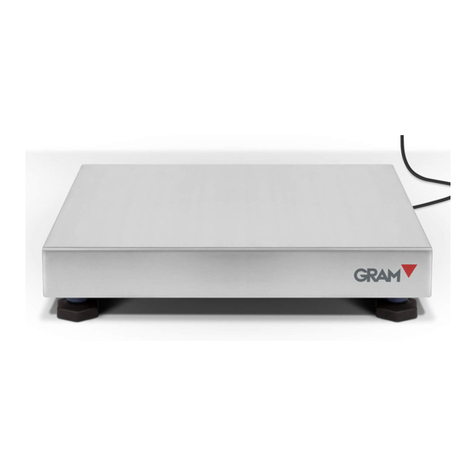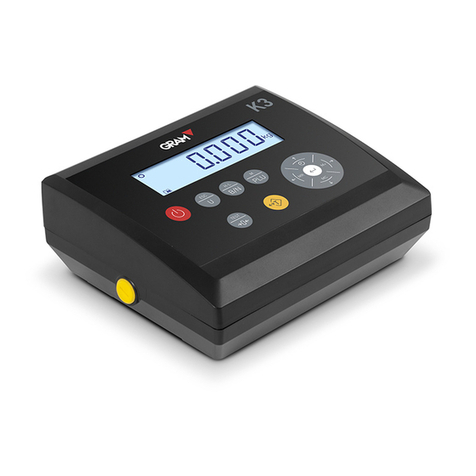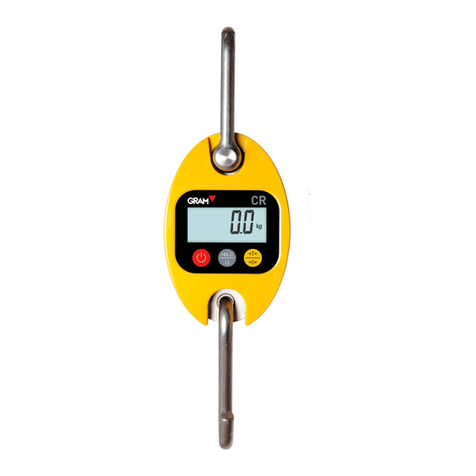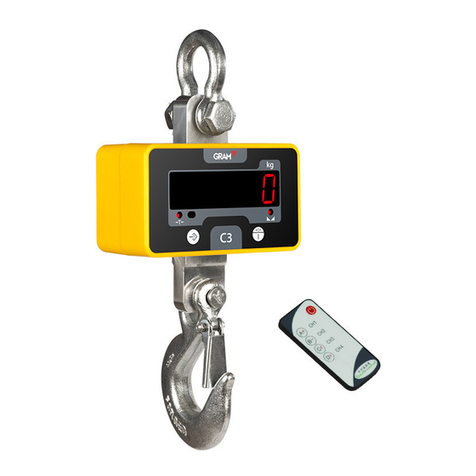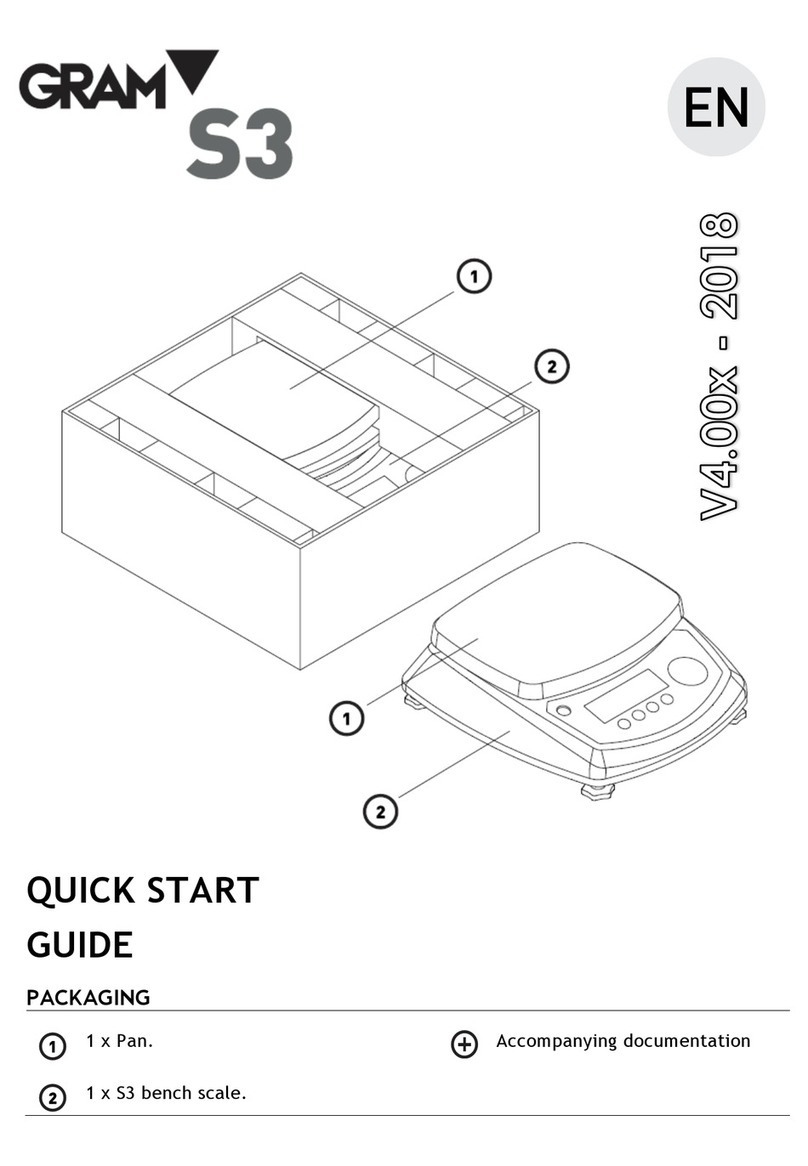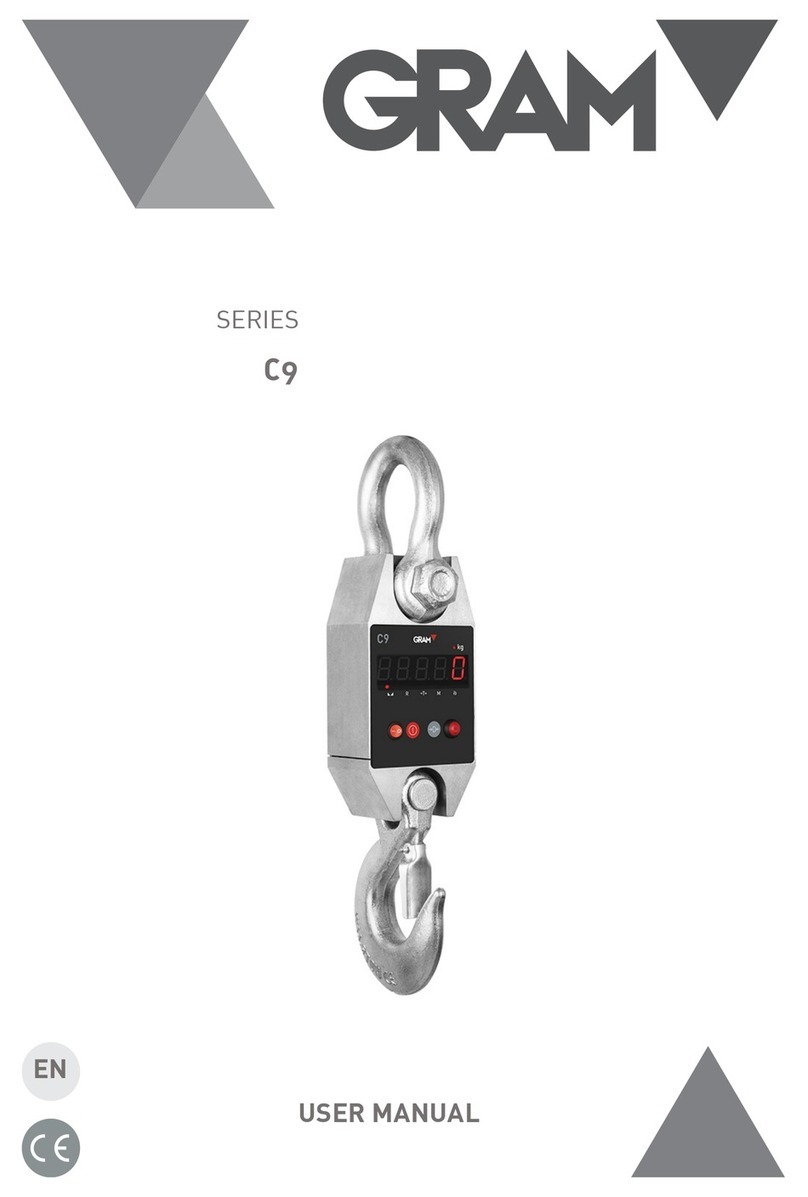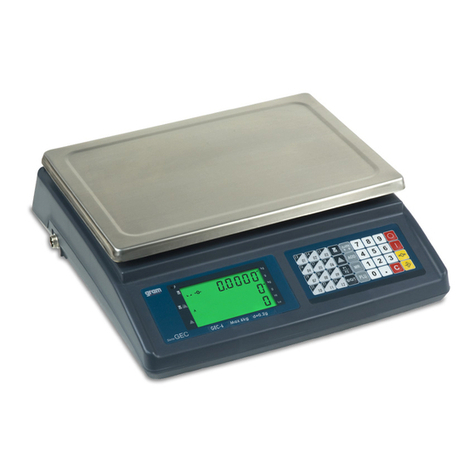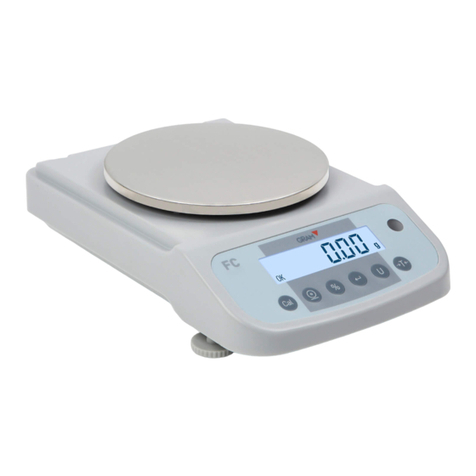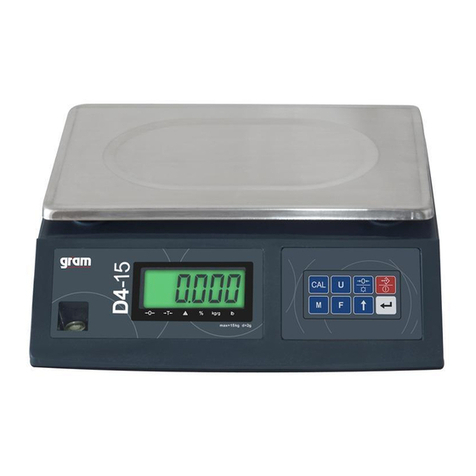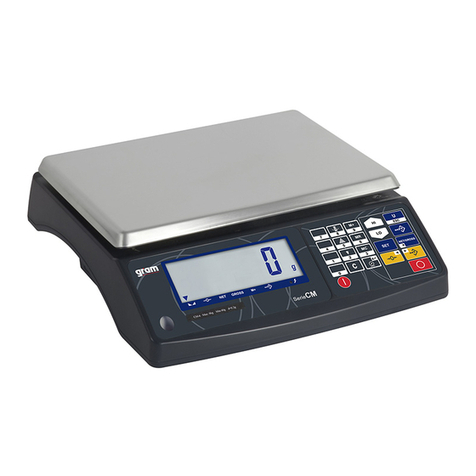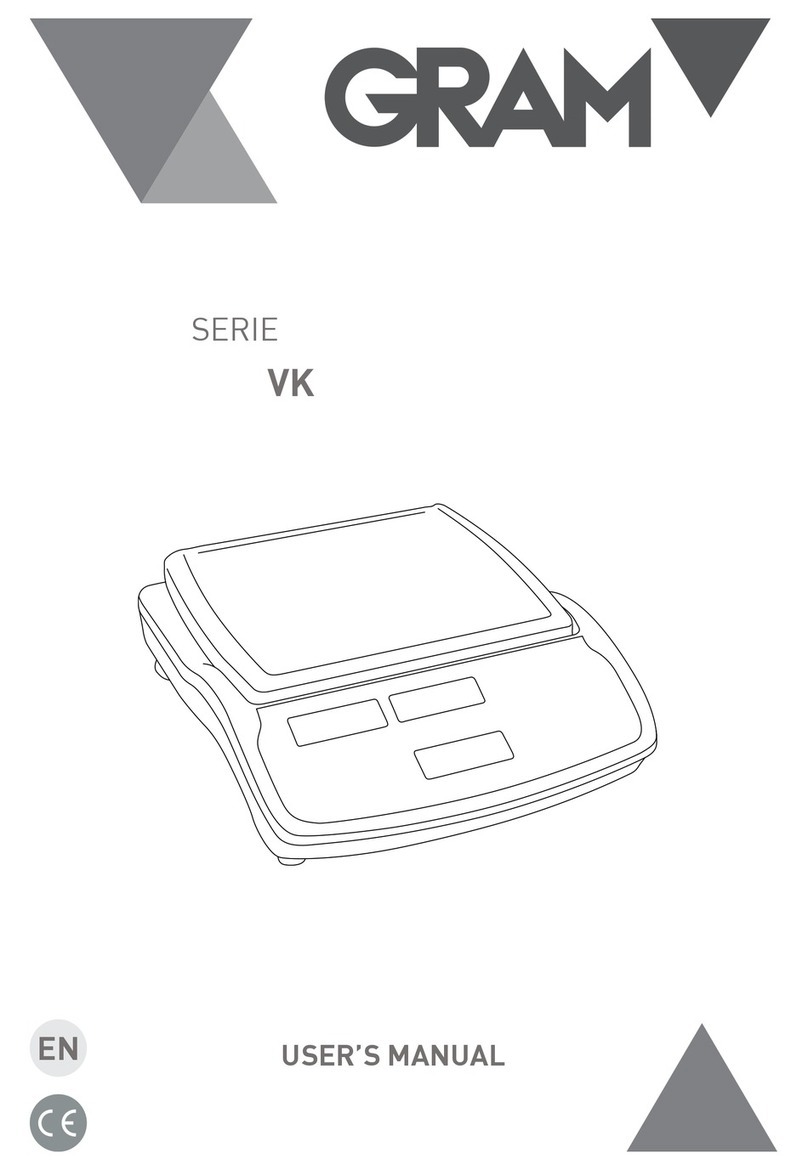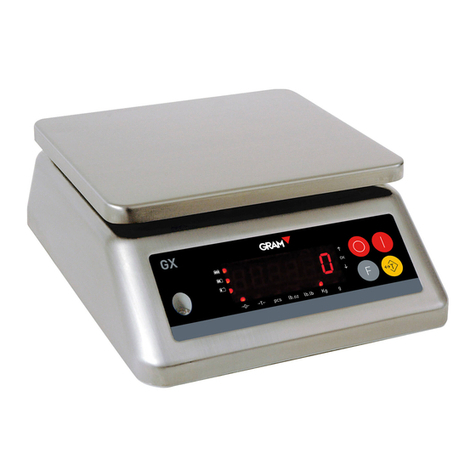
8
ENGLISH
SAFETY WARNING
• Disconnect from supply before installation or disassembly.
• Before start using it, check if the voltage in the characteristics label
corresponds with the network you are going to connect it with. If not, do
not connect the scale in the network.
• Do not rest the scale over its plate or underplate because it can damage
the load cell. To manipulate the low part (external platform connection,
charger or to change battery) the scale should rest over its sides, but
never over its plate.
• Do not hit the plate or underplate neither frontal nor on its sides,
because the load cell could get damaged. It is a precision instrument,
and it should be treaten carefully.
• Before start using it, check the charger cable is not stucked or under
pressure. It should be out from any pressure.
• The scale should only be used under proper environmental conditions
indicated in this operation manual.
• Do not use this scale in places where there are unstable conditions or
explosive danger.
• Do not place the scale near heat sources or under direct solar radiation
influence.
• Keep the scale far away from other electromagnetic radiation sources.
Its influence could affect the weighting precision.
• When low-battery advertisement appears, the battery should be charged.

